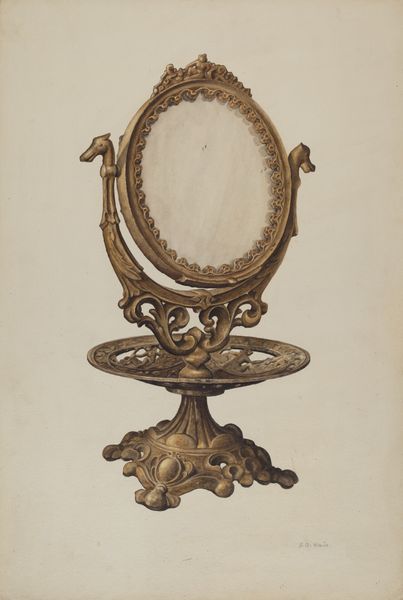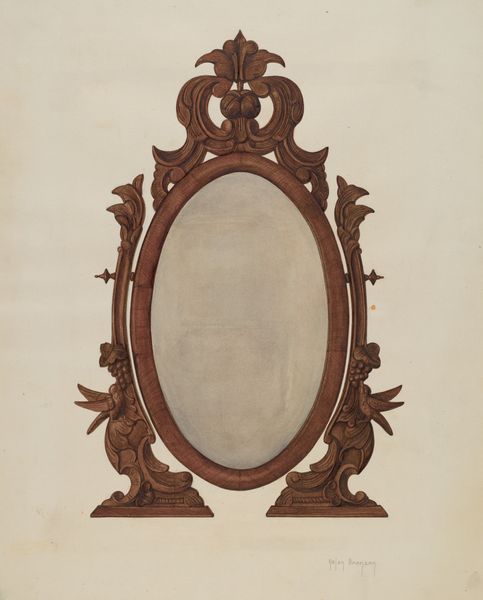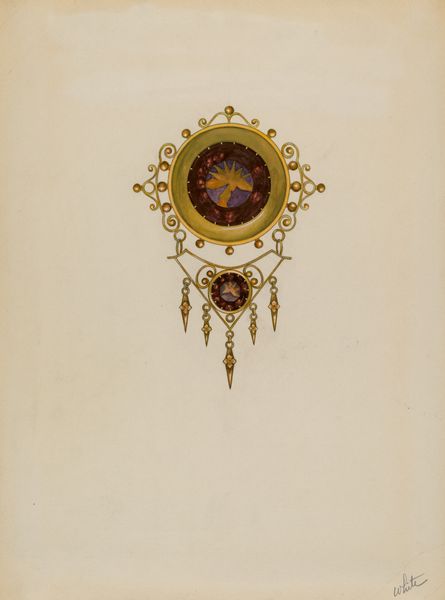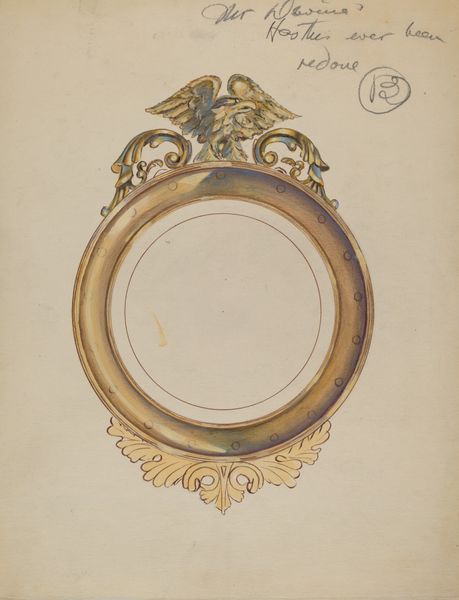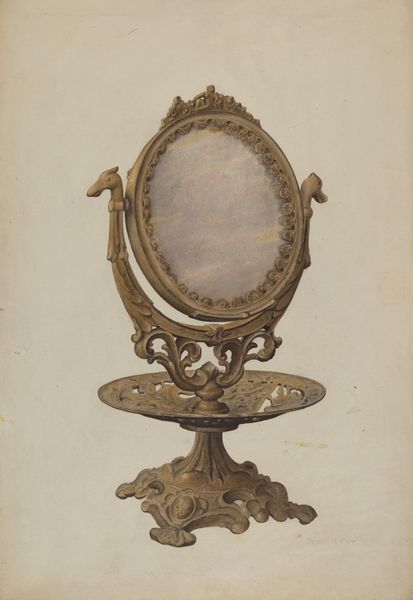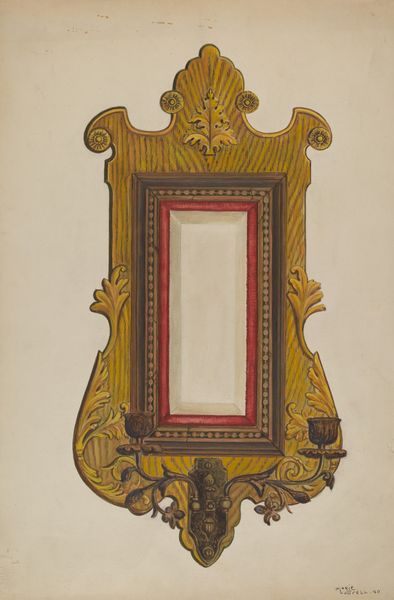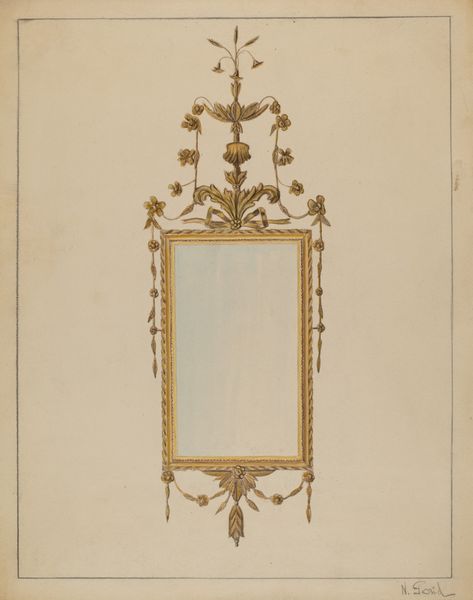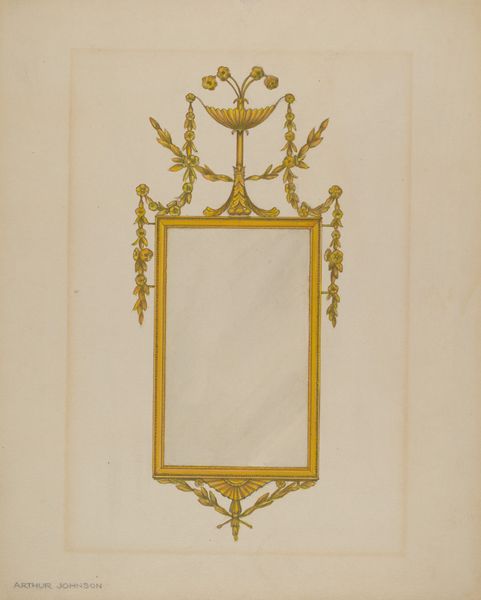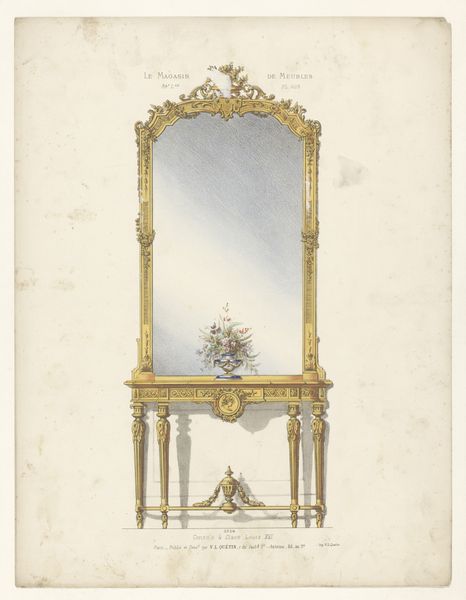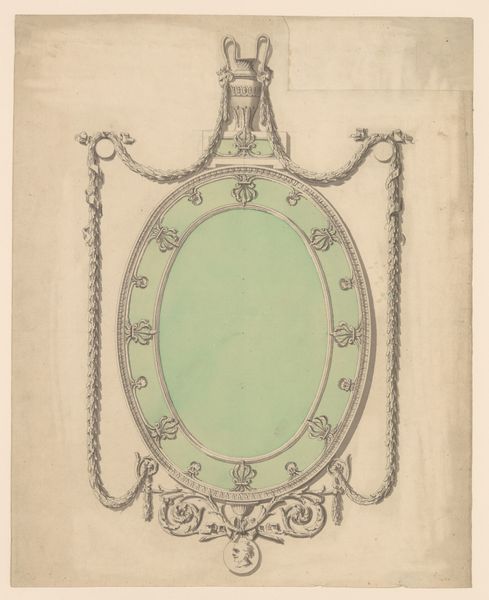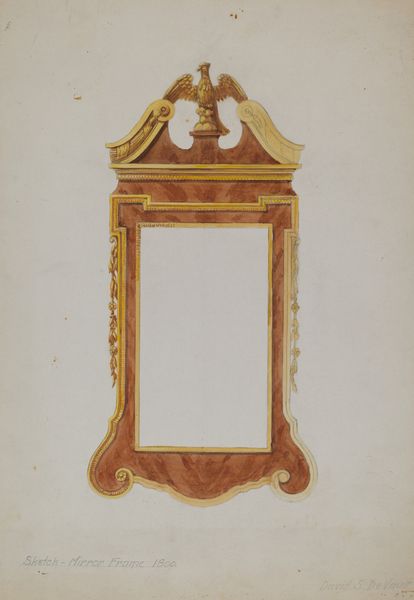
Dimensions: overall: 29.5 x 22.7 cm (11 5/8 x 8 15/16 in.) Original IAD Object: 46 1/2"high; 32 1/2"wide 24"in diam.
Copyright: National Gallery of Art: CC0 1.0
Curator: Ferdinand Cartier's "Mirror," dated 1936 and rendered in watercolor, gives off this air of faded grandeur. What do you see? Editor: Initially, I observe a fascinating study in classical formalism: a central circular void framed by elaborate ornamentation and symmetrical accoutrements. It suggests both absence and potential presence, quite intriguing. Curator: I'm captivated by how Cartier employs the eagle motif; perched atop, regal, almost oppressive. Does that strike you as an assertion of power, perhaps a reflection of the era it was made in? Editor: Undeniably. The eagle functions as a clear signifier of authority and imperial bearing. The meticulous detail and balanced composition—mirror flanked by candelabras, topped by the commanding eagle—speak volumes about control and deliberate aesthetic intent. It flirts with semiotics! Curator: The choice of watercolor, so delicate, juxtaposed against such grandiosity... Do you find it undermines or strengthens the overall impact? I always wonder. Editor: A pertinent observation! Watercolor allows for subtle gradations, softening the rigid neoclassical structure, almost inviting a ghostly presence to inhabit it. Its translucence lends an ethereal quality. That eagle though! It’s so imposing, that softening doesn’t entirely convince me. Curator: For me it evokes an imagined space. Like a vignette glimpsed in the reflection—something both familiar and impossibly out of reach, even if just a little! Editor: An enticing concept! It is the symmetry, however, that grounds it for me; a strictness that reminds us how much calculated design goes into what might first appear effortlessly beautiful. I appreciate Cartier’s play between constraint and decorative abandon. Curator: Agreed! Seeing it again has shifted my thinking somewhat too – it feels less imposing now, more like an open question of form. Thank you. Editor: My pleasure! It reinforces my appreciation for how artworks like this compel continued close visual investigation, constantly yielding fresh insights into historical, cultural, and aesthetic meaning.
Comments
No comments
Be the first to comment and join the conversation on the ultimate creative platform.
